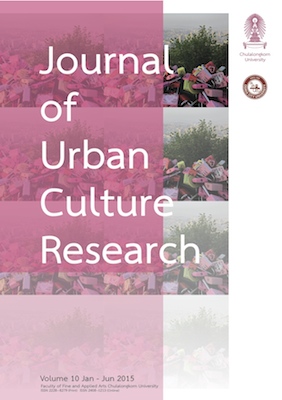Composing a Thai Symphony– An Emblem of Victory
DOI:
https://doi.org/10.14456/jucr.2015.6Keywords:
Music, Music Composition, Thai Music, Symphony, Emblem, Sufficiency EconomyAbstract
The symphonic masterpiece “Sanyalak Haeng Chaichana” (สัญลักษณ์แห่งชัยชนะ – The Emblem of Victory) was composed to honor His Majesty King Bhumibol Adulyadej. It was written as a program symphony for standard symphony orchestra, spanning 35 minutes and is split into four movements: each movement representing each symbol of the Chaipattana Foundation’s Emblem and His Majesty’s graciousness to the Thai populace. The music also reflects the variety of urban cultures in Thailand, drawing characteristics from various genres of music namely classical, marching band, jazz, and traditional Thai music. The first movement starts off with a fast tempo, representing “Phra Saeng Khan Chaisi” (Chaisi Royal Sword) which is interpreted as “The Power of Land.” The second movement is also fast in tempo, representing “Thong Krabi Thut” (Krabi Thut Flag) which refers to “The Cherished Possession of the People.” The tempo slows down to a moderately slow pace in the third movement, representing “Dok Bua” (Lotus Blossom) which symbolizes “The Philosophy of the Sufficiency Economy.” The tempo picks up to a moderately fast pace in the last movement, representing “Sang” (Royal Conch) which is interpreted as “The Ambrosia – Rain, Salvation for the Earth.”Downloads
How to Cite
Tagosa, Woraket. 2015. “Composing a Thai Symphony– An Emblem of Victory”. Journal of Urban Culture Research 10 (July):84-95. https://doi.org/10.14456/jucr.2015.6.
Issue
Section
Case Study
License
Authors authorize the JUCR to publish their materials both in print and online while retaining their full individual copyright. The copyright of JUCR volumes is retained by Chulalongkorn University.
The views and opinions expressed herein are those of the individual author(s) and do not necessarily reflect the policies or opinions of the Journal (JUCR), it editors and staff, Chulalongkorn University, or Osaka Metropolitan University.








